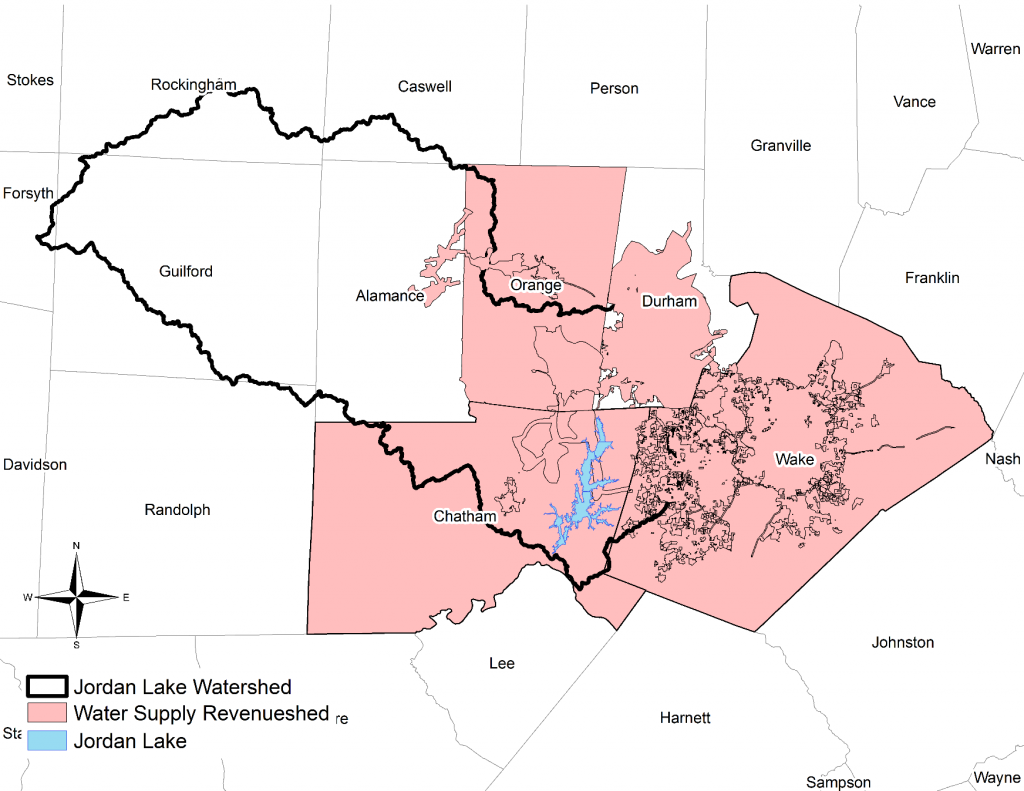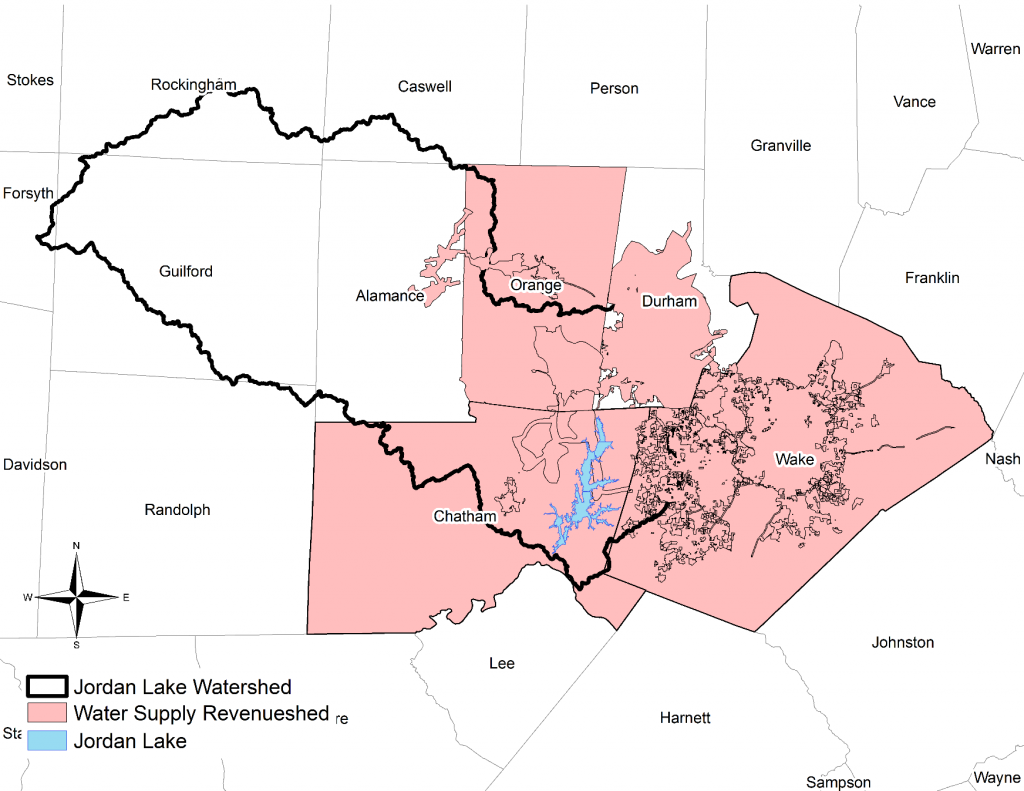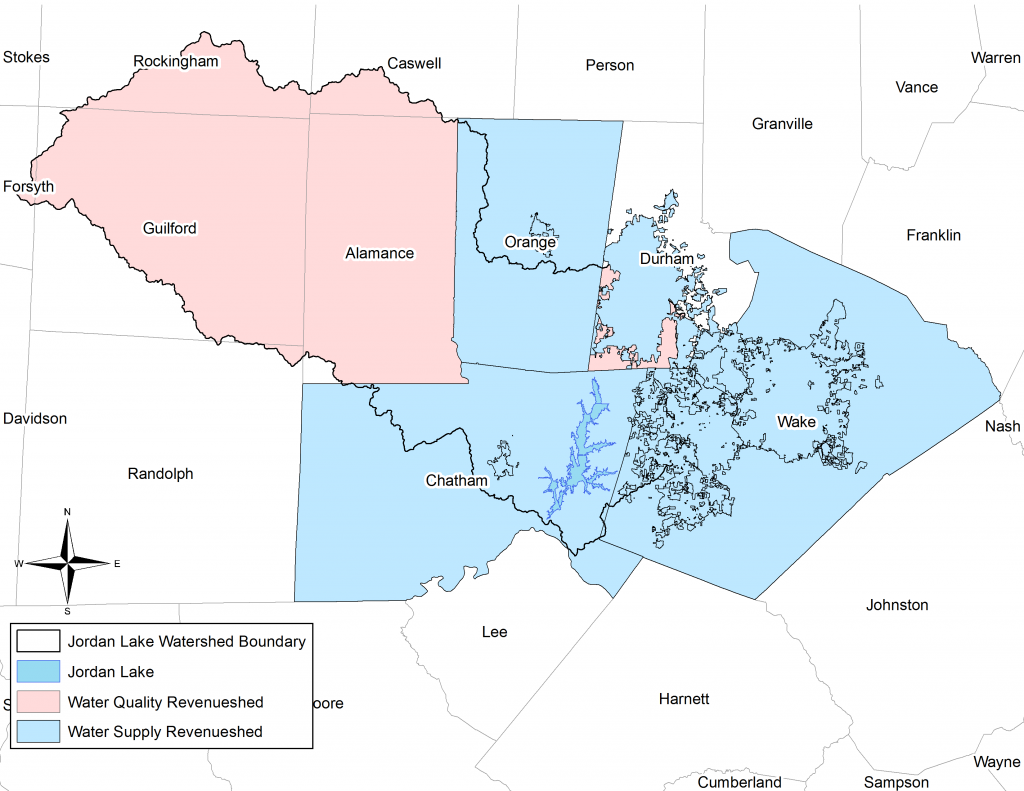The EFC Enters Third Year of Considering Financing Strategies for Nutrient Management in the Jordan Lake Watershed.
In 2016, the North Carolina legislature commissioned a six-year nutrient management study to be done through the University of North Carolina at Chapel Hill for the purpose of reevaluating the nutrient management strategies for the Jordan Lake and Falls Lake watersheds.
The Environmental Finance Center (EFC) is one of more than a dozen teams working on the study, and our work is focused on the legislative directive to “review the costs and benefits of existing nutrient management strategies,” so that the State can modify such strategies in order to “share costs on an equitable basis.” The first three years of the six-year study are focused on Jordan Lake, and the last three years will be focused on Falls Lake.
Since beginning the study, the EFC has been focused on understanding the experiences and perspectives of the entities who will ultimately be responsible for implementing and paying for nutrient management strategies in Jordan Lake. In order to do that, during the first year of the study, we met with a wide variety of individuals and organizations within and outside the Jordan Lake watershed, with our main focus being on speaking with representatives from local governments. Through those conversations, we found that although the Jordan Lake Rules have gone through repeated periods of being stalled or delayed, many local governments in the Jordan Lake watershed are engaged in ongoing nutrient management and reduction practices as a result of the portions of the rules being enforced, and in anticipation of the rules which are still on hold. View our first year report here.
In our second year of research, we worked on calculating the amount of revenue which could be generated using existing local government finance tools such as water rates, stormwater fees, or local taxes; we tried to identify which financing mechanisms are being underutilized, and how much revenue could be added by expanding those mechanisms; and we experimented with expanding the revenueshed [1], by bringing in other revenue contributors beyond those currently paying for nutrient management under the Jordan Lake rules. See below for some of the different revenuesheds the EFC is currently modeling:
Watershed Drainage Basin Revenueshed

The watershed drainage basin revenueshed shown above consists of all tax parcels and environmental service rate payers within the Jordan Lake Watershed, defined as the Haw HUC8 watershed taken from the National Watershed Boundary Database published by the USGS. This is the boundary for the current revenueshed for Jordan Lake nutrient management.
Water Supply Revenueshed

The water supply revenueshed is made up of eight municipalities, three counties, and one water authority that have access now to Jordan Lake water or could in the future have access based on Jordan Lake Allocations and current planning initiatives. All entities but two, Hillsborough and Holly Springs, have some or all of their territory also located in the watershed drainage basin revenueshed. For the purposes of this study, both Jordan Lake Partnership members and water allocation holders are considered to be beneficiaries of increased water quality within Jordan Lake and are thus the entities included in the water supply revenueshed.
Comprehensive Water Quality Protection Revenueshed

The comprehensive water quality protection revenueshed includes both the watershed drainage basin and the water supply revenuesheds.
For more details about the different revenueshed models mapped out above, and for the associated potential revenue generation, check out our second year report here.
EFC Capstone Spring 2018
Additionally during our second year of research, the EFC had the privilege of taking on teaching an undergraduate capstone course at UNC in the spring of 2018, which was funded by the North Carolina Policy Collaboratory. The Collaboratory manages the nutrient management study as one of its projects commissioned by the legislature. The clients for our capstone students were the Jordan Lake One Water Association (JLOWA) and representatives from the Division of Water Resources (DWR). The capstone looked into the nutrient management landscape in Jordan Lake, and the students were specifically given the following questions to guide their research:
- What is currently happening in the Jordan Lake watershed with respect to nutrient management?
- Who are the different players and how do you define their roles?
- Can you identify all the initiatives aimed at nutrient management?
- What do those initiatives cost, who is funding them, and are they cost effective?
To address the questions, the students created an interactive map during the course of the semester and tracked all nutrient management initiatives they could find. They tried to identify which projects were most cost-effective and whether there were opportunities for collaboration that were not occurring. They tried to understand what was driving local governments to take on nutrient management initiatives (environmental regulations or something else), and they worked on ways to link all of the initiatives to the concept of One Water to help decision makers identify some potential opportunities for more collaboration across the watershed.

At the end of the semester, the students created a website to house their maps and report, and presented their findings to their clients. Read more about the students’ findings on their website here.
What next?
As we move into our third year, we are excited to be working on developing several models, which will build on the research from the first two years. We are not only looking deeper into the revenue generating potential, but also for the different ways that money could be spent once it is pooled, and also trying to identify legal or policy barriers to any of the approaches.
Additionally, the EFC is overseeing an undergraduate student who is researching other models for regional nutrient management utilities and programs around the country. She is delving into the specific legislation and financing details that accompany the models, and also looking for evidence, where available on the effects on water quality that such models have had in their regions. She has already begun compiling her research which started this past summer during her LEAF fellowship with the Triangle J Council of Governments.
Finally, we are excited to be given the opportunity to teach another capstone at UNC this coming spring, which is again going to be funded by the North Carolina Policy Collaboratory, and which will again involve research related to the nutrient management study. Stay tuned for the class specifics and the syllabus later this fall.
[1] Our defined concept of a Water Quality Revenueshed identifies the area within which revenue is generated for watershed protection. This framework can be used for multiple purposes including:
- To cultivate Accountability
- To generate discussions among local governments
- To develop interactive financial tools to assist in policy-making
Erin Riggs is a Project Director at the EFC and conducts applied research surrounding legal, policy, and accounting framework that influences environmental finance issues around the country. Erin graduated from the University of Florida College of Law where she pursued a law degree with a specialization in Environmental and Land Use issues.

